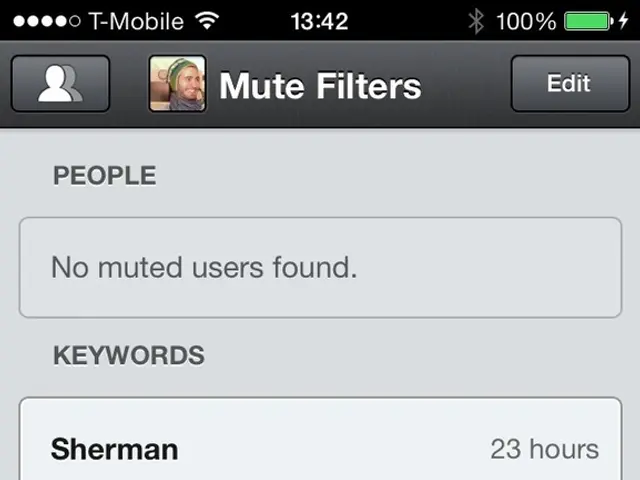Essential Knowledge for Aspiring Screenwriters in the Hollywood Industry: Critical Perspectives to Consider
In the early days of cinema, Hollywood screenwriting took shape during the silent film era (1910-1927). With a focus on engaging visuals that could be easily understood by diverse audiences, the industry began to organize production around detailed continuity scripts. Producer Thomas Harper Ince pioneered a centralized system, where multiple production units followed tight scripts specifying every scene, enabling efficient budgeting and scheduling. This system became the prototype for the dominant "studio system" of Hollywood, emphasizing standardized narrative formulas to accommodate mass production [1].
The advent of sound in 1927-1929 marked a significant shift in screenwriting. Dialogue became essential, reshaping scriptwriting, and the Hollywood Production Code (initiated in the 1930s) rigidly defined what could be shown or said on screen. This code essentially acted as a blueprint for screenwriters, prescribing moral outcomes to stories (e.g., crime must be punished, love must lead to marriage) and limiting the types of content and dialogue allowed. This censorship helped streamline the screenwriting process, standardizing scripts further for efficiency and broad audience appeal [2].
Throughout the Golden Age of Hollywood (1930s-1950s), the studio system kept screenwriting within controlled parameters, making screenwriters integral to producing polished, continuity-based films under strict studio supervision. Story formulas and genre conventions were heavily emphasized [3].
However, from the 1960s to 1970s, the rise of auteur directors challenged the strict studio system. New Hollywood emerged with more personal, auteur-driven scripts, allowing greater creative freedom for screenwriters and directors. By the late 1970s and into the 1980s and beyond, the blockbuster era reasserted commercial priorities, emphasizing spectacle, special effects, and marketability, which again influenced screenwriting to focus on broad appeal and franchise viability [4].
The independent film movement that grew alongside mainstream Hollywood also created new niches for screenwriters, focusing on more personal, unique stories and diverse voices outside the studio system. Entities like Sundance Film Festival arose from this movement, supporting the development and distribution of indie screenplays distinct from mainstream Hollywood formulas [5].
Effective pitching is key to getting a screenplay noticed, requiring a captivating logline, elevator pitch, and understanding of the audience's preferences. Science fiction scripts explore imaginative concepts, such as futuristic settings, advanced technology, and space exploration, while grounding characters in relatable emotions. Comedy scripts focus on humor, often featuring exaggerated scenarios and witty dialogue. Thriller scripts aim to heighten suspense through pacing, plot twists, and emotional responses to character dilemmas [6].
Crafting realistic dialogue is essential for screenplays, as it reveals character depth, advances the story, and creates authenticity. A successful Hollywood screenplay relies on a strong, well-defined structure, such as the three-act structure, which provides the foundation for a coherent narrative [7]. Subverting genre expectations can increase script appeal by creatively twisting tropes and archetypes, such as genre bending or character role twists [8].
Diversity and inclusion in screenwriting are reshaping the industry by encouraging authentic representation and creating richer stories with a wider array of viewpoints. Building a network is crucial in Hollywood screenwriting, with opportunities found at screenwriting workshops, film festivals, and online platforms [9].
Adapting to industry shifts, technological advancements, and audience preferences is crucial for screenwriters who want to stay at the forefront of screenwriting innovation. Emerging technologies like virtual reality and interactive films offer new storytelling possibilities, redefining audience engagement and urging screenwriters to embrace immersive storytelling methods [10].
The tonality of dialogue varies based on genre, with comedy requiring light and snappy dialogue, and dramas demanding introspective conversations for character development. Tailored narrative structures are essential for specific genres, with horror often extending tension into a four-act sequence [11].
The challenge of adapting literary works into screenplays requires careful consideration of the source material, balancing fidelity and creativity, and condensing complex narratives while maintaining the essence that made the original work compelling [12]. Script coverage is an in-depth analysis and evaluation given to scripts by industry professionals or services, providing objective insights and helping screenwriters improve their work [13].
Characters lie at the heart of any compelling story, and developing complex, relatable characters is crucial for creating screenplays that resonate with audiences. Utilizing tools for feedback and analysis, such as script coverage, can help identify areas for improvement and make the writing more marketable [14].
Choosing the right screenwriting software, like Final Draft or Celtx, can facilitate the writing process and adhere to industry standards [15]. Building a network, staying adaptable, and focusing on strong character development and narrative structures are key to success in Hollywood screenwriting.
References: [1] Bordwell, D., Staiger, J., & Thompson, K. (2010). The Classical Hollywood Cinema: Film Style & Mode of Production to 1960. New York: Columbia University Press. [2] Ostroff, P. (1992). The Hays Office: Censorship and the Making of the American Film Industry. New York: Columbia University Press. [3] Kael, P. (1991). I Lost It at the Movies. New York: Mariner Books. [4] Schatz, T. (1993). The Genius of the System: Hollywood Filmmaking in the Studio Era. New York: Pantheon Books. [5] Sitney, J. (1992). Visionary Film: The American Avant-Garde, 1943-2000. New York: Oxford University Press. [6] Field, S. (2011). The Screenwriter's Bible: A Complete Guide to Writing, Selling, and Producing Your Screenplay. New York: McGraw-Hill. [7] McKee, R. (1997). Story: Substance, Structure, Style, and the Principles of Screenwriting. New York: ReganBooks. [8] Vogler, C. (2007). The Writer's Journey: Mythic Structure for Writers. 2nd ed. Studio City, CA: Michael Wiese Productions. [9] Galloway, G. (2006). The Hollywood System: How Entertainment Rules the World. New York: Columbia University Press. [10] Jenkins, H. (2006). Convergence Culture: Where Old and New Media Collide. New York: NYU Press. [11] Clover, J. (1992). Men, Women, and Chainsaws: Gender in the Modern Horror Film. Princeton, NJ: Princeton University Press. [12] Britton, A. (2007). Adaptation: The Art of Screenwriting. New York: Continuum. [13] Field, S. (2011). The Screenwriter's Bible: A Complete Guide to Writing, Selling, and Producing Your Screenplay. New York: McGraw-Hill. [14] McKee, R. (1997). Story: Substance, Structure, Style, and the Principles of Screenwriting. New York: ReganBooks. [15] Field, S. (2011). The Screenwriter's Bible: A Complete Guide to Writing, Selling, and Producing Your Screenplay. New York: McGraw-Hill.
- As the Hollywood film industry evolves, screenwriters must stay informed about industry trends, including lifestyle, technology, entertainment, and compliance with industry standards, to create compelling and marketable scripts.
- In response to the rise of auteur directors in the 1960s and 1970s, screenwriters gained more creative freedom to develop unique narratives, challenge genre conventions, and cater to diverse audiences.
- To ensure script compliance and achieve adequate coverage, screenwriters can submit their work to agents for evaluation and objective insights, helping them navigate the competitive landscape of Hollywood screenwriting.




